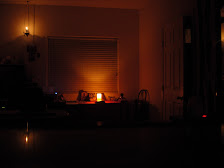 Commemorated on April 4
Commemorated on April 4The Holy Martyr Pherbutha (Phermoutha) and her sister and servants were martyred for Christ between the years 341 and 343. St Pherbutha and her sister were sisters of Bishop Simeon of Seleucia, who suffered for Christ under the Persian emperor Sapor between the years 341-344.
Both sisters and their servants had been brought to the court by the empress to attend her. St Pherbutha was distinguished by her extraordinary beauty, and the empress suggested that she marry in order to gain high position. The saint refused, since she had made a vow of virginity and total service to God.
Soon the empress fell ill. The sorcerers who were brought in to treat the empress, saw St Pherbutha and were struck by her extraordinary beauty. One of them asked her to become his wife. The saint answered that she was a Christian and had vowed to remain a bride of Christ.
The offended sorcerer reported to the emperor that the sickness of the empress was caused by poison given her by servants. By order of the emperor St Pherbutha, and her sister and servants were brought to trial.
At the trial the holy martyrs fearlessly declared that they were innocent of any crime, and that they were prepared to accept death for Christ.
The chief judge, the sorcerer Mauptis, was captivated by the beauty of the holy virgin Pherbutha, and he secretly sent his servant to her in the prison offering to free her and her companions, if only she would consent to become his wife. The two other judges secretly made similar offers to the holy virgin, one after the other.
St Pherbutha resolutely refused all these offers, saying that she was a bride of Christ and could never consent to an earthly marriage.
After this, the martyrs were found guilty of being Christians and of working magic in poisoning the empress, and they were sentenced to death. The pagan priests said that the bodies of the Christians should be cut into pieces. They placed three pieces on one side, and three pieces on the other side. Then they told the empress to walk between the body parts in order to receive healing. The bodies of the holy martyrs were thrown into a ditch, from which Christians secretly retrieved them and buried them.
SOURCE:
SAINT OR FEAST POSTED THIS DATE 2013(with 2012's link here also and further, 2011, 2010, 2009 and even 2008!)









.jpg)






No comments:
Post a Comment